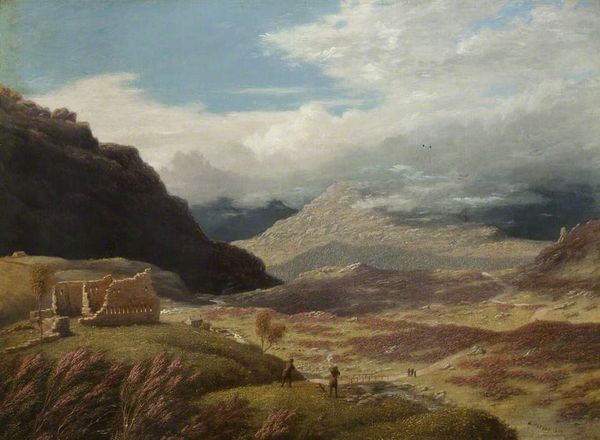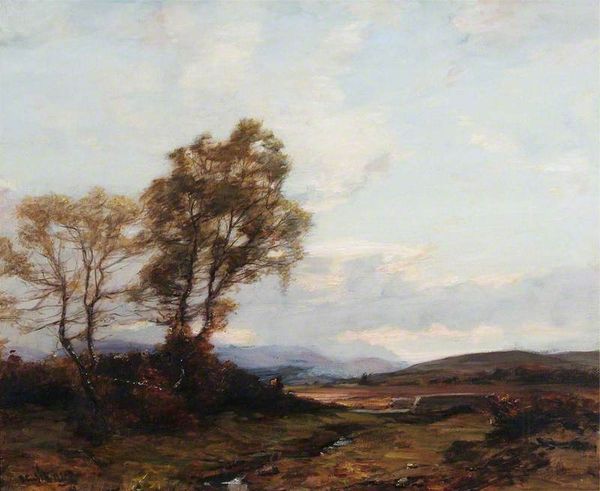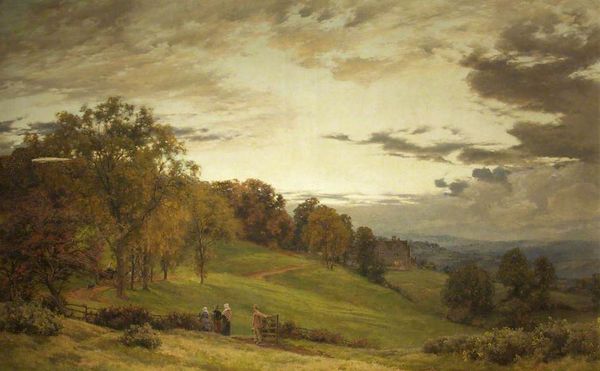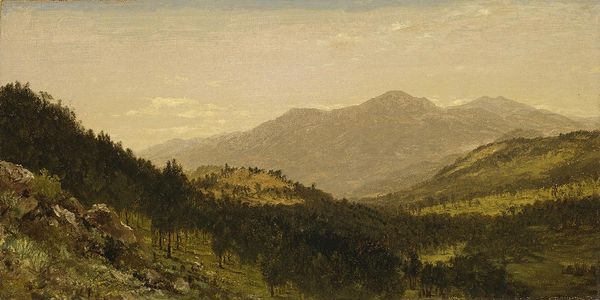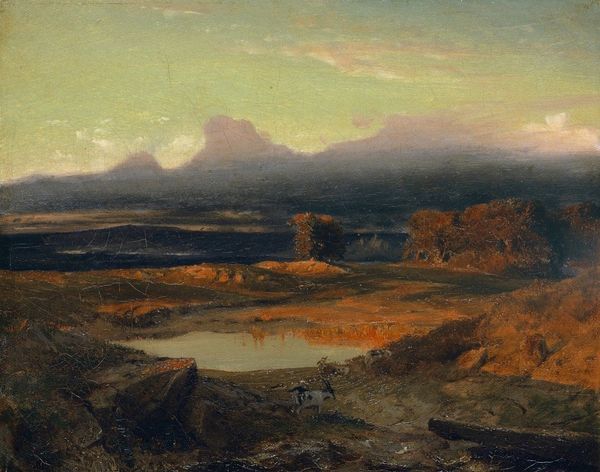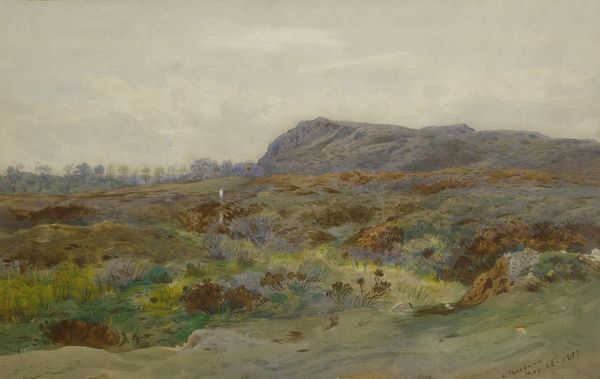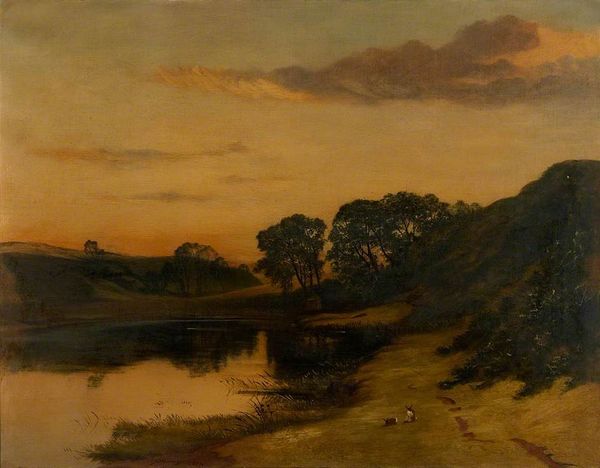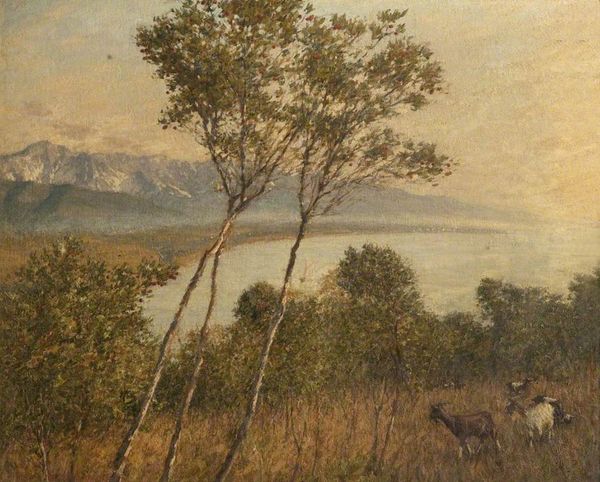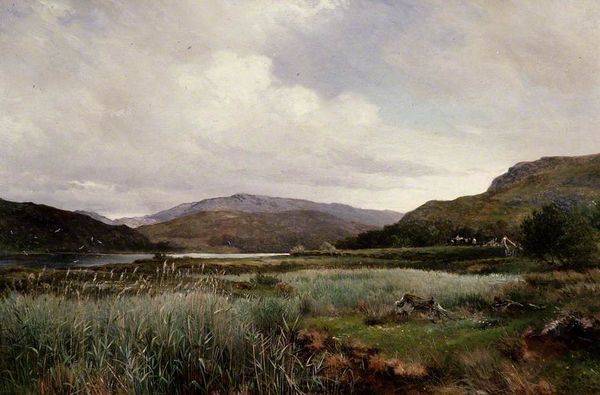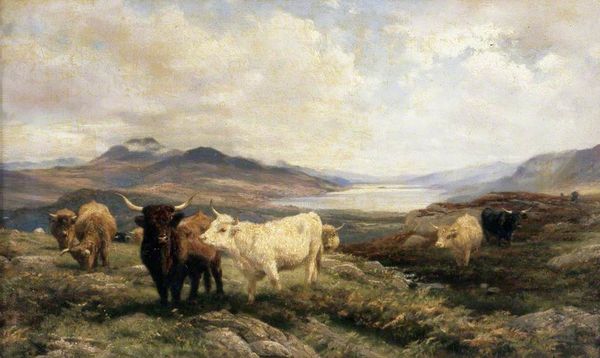
Copyright: Public domain
Editor: This is George Harvey's "Dawn on a Scottish Moorland," painted in 1866 with oil paints, probably en plein-air. It has such a solitary feel to it, like a landscape holding its breath. What’s your interpretation of it? Curator: It's fascinating to consider this painting in the context of the 19th-century Scottish Highlands. We often romanticize the landscape, but there’s a powerful historical narrative missing here. Where are the people? What does their absence convey? Editor: Well, you do see some sheep. Maybe that suggests an economy based on wool? Curator: Precisely. Think about the Highland Clearances. Land traditionally held in common was privatized and converted to sheep farming, displacing thousands. Does Harvey’s tranquil dawn actually obscure a more violent story of dispossession? Editor: So, the beauty almost serves to mask a really painful history? Curator: It makes you wonder, doesn’t it? This Romantic style, so celebrated for its depiction of sublime nature, maybe also served a purpose. Could it distract from or even legitimize disruptive socio-political changes? Editor: That's a much darker reading than I initially considered, I guess. Curator: The role of landscape painting evolved substantially across this period, with artists sometimes using landscape to suggest or infer contemporary social realities. Consider what this artistic movement ultimately excluded. It raises essential questions about who benefits from a particular vision of national identity. Editor: This conversation makes me see it, and landscape art in general, with fresh eyes. Thanks! Curator: My pleasure. Looking closely unveils unexpected complexities, I'm happy to discuss further another time.
Comments
No comments
Be the first to comment and join the conversation on the ultimate creative platform.
